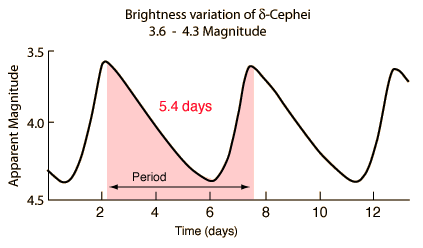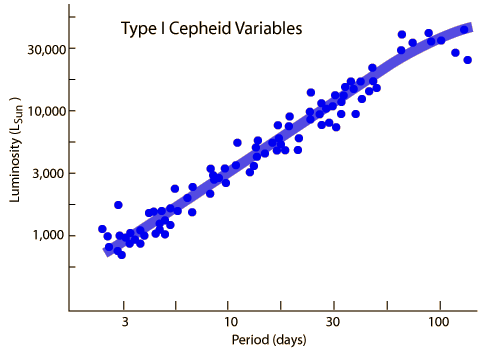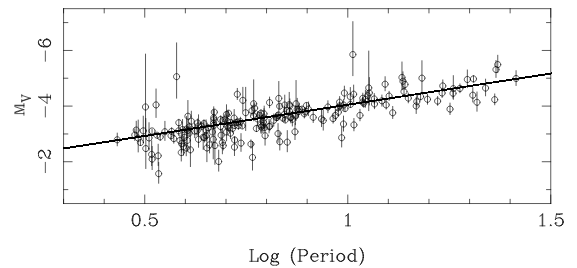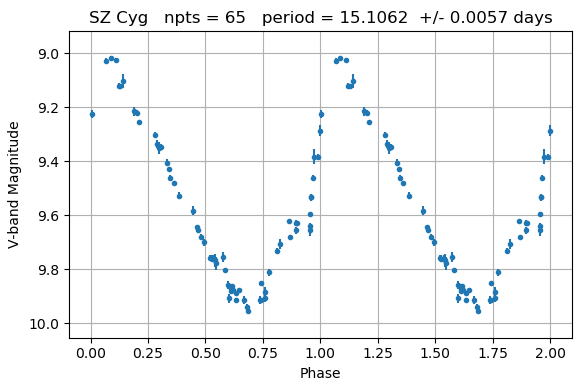 |
Department of Physics | AstroLab |
The Period-Luminosity Relation of Cepheids
Cepheid variable stars are crucial tools to measure galaxy distances and hence the determination of the Hubble constant. They are named after the prototype, the 4th magnitude star δ Cephei. They are pulsating variable stars that over their period change in radius, surface temperature and brightness.

(image from hyperphysics.phy-astr.gsu.edu)
Cepheids have three extremely valuable characteristics: (a) they have a very distinctive 'sawtooth' shaped light curve with periods of between a few days and 50 days, i.e. they can be easily recognised; (b) they are very luminous stars, i.e. they can be seen to great distances (at least to 30 Mpc with the Hubble Space Telescope); (c) they have a well-defined period-luminosity (PL) relationship, i.e. they can be used as standard candles. This latter property was discovered in 1908 by Henrietta Leavitt from her study of 1000s of variable stars in the Magellanic Clouds.

(image from hyperphysics.phy-astr.gsu.edu)
In astronomy the term standard candle is used for an object that has a known intrinsic brightness (i.e. the absolute magnitude, M, is known). The distance (d) of the object can then be calculated by measuring the apparent magnitude (m) via the distance modulus equation, i.e.
Alternatively if M is known (for Cepheids from the PL relation) then the distance to the object can be found.
Once the PL relationship is calibrated, i.e. the absolute magnitude versus period relation is known, Cepheids can be used as standard candles. While this zero-point calibration is hard to determine well as Cepheids are intrinsically rare stars, recently the GAIA DR2 data release has provided reliable parallax measurements for a few hundred Cepheids.
Using GAIA DR2 parallaxes for 248 Classical Cepheids Groenewegen (2018) found the PL relation:
Part of Groenewegen (2018) Figure 5

Thus a 3-day period Cepheid has an absolute V-band magnitude of −3.1, while a 30-day period Cepheid has an absolute V-band magnitude of −5.3.
Below is the V-band light curve derived for the 15.1 day Cepheid SZ Cyg from Durham observations. The exposure times were typically 8 seconds and the photometry was calibrated using Refcat2.

The aim of the project is to determine the B- and V-band light curves for a carefully selected set (n ∼ 16) of nearby Cepheid variables that have good distance measurements from Gaia in order to provide a new fully independent calibration of the PL relationship. This will involve gathering data with our Durham telescopes and from the La Palma pt5m.
Project Notes Project References| Back to the AstroLab Home Page | jrl | 2020-Jun-17 13:44:28 UTC |